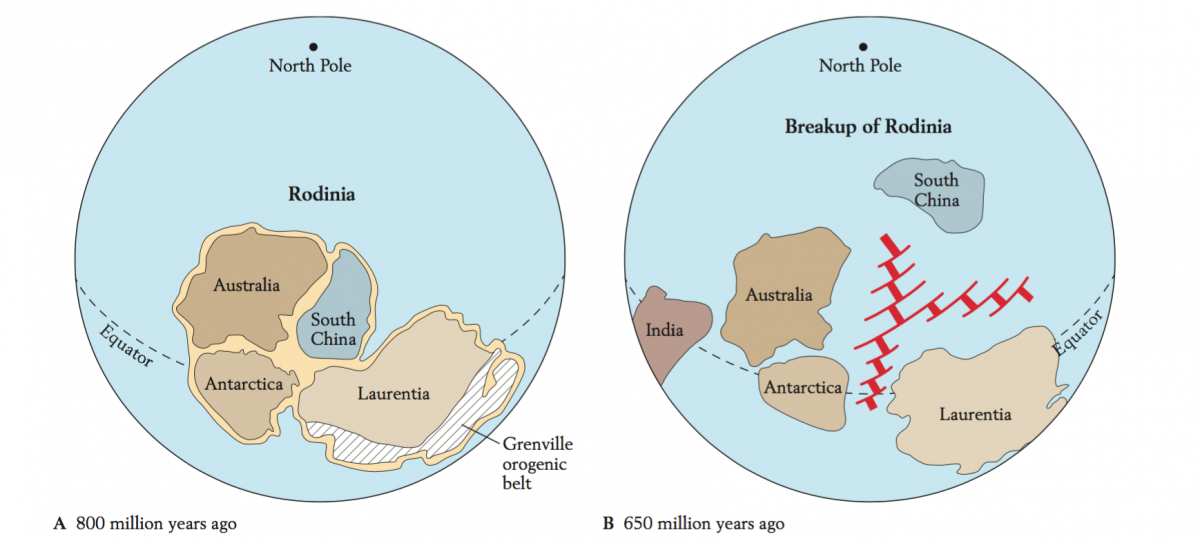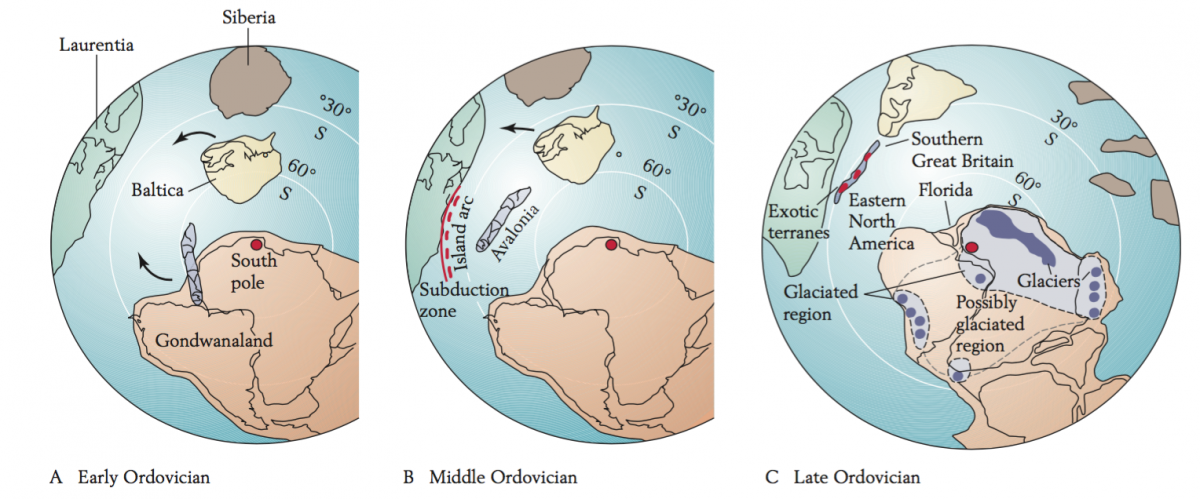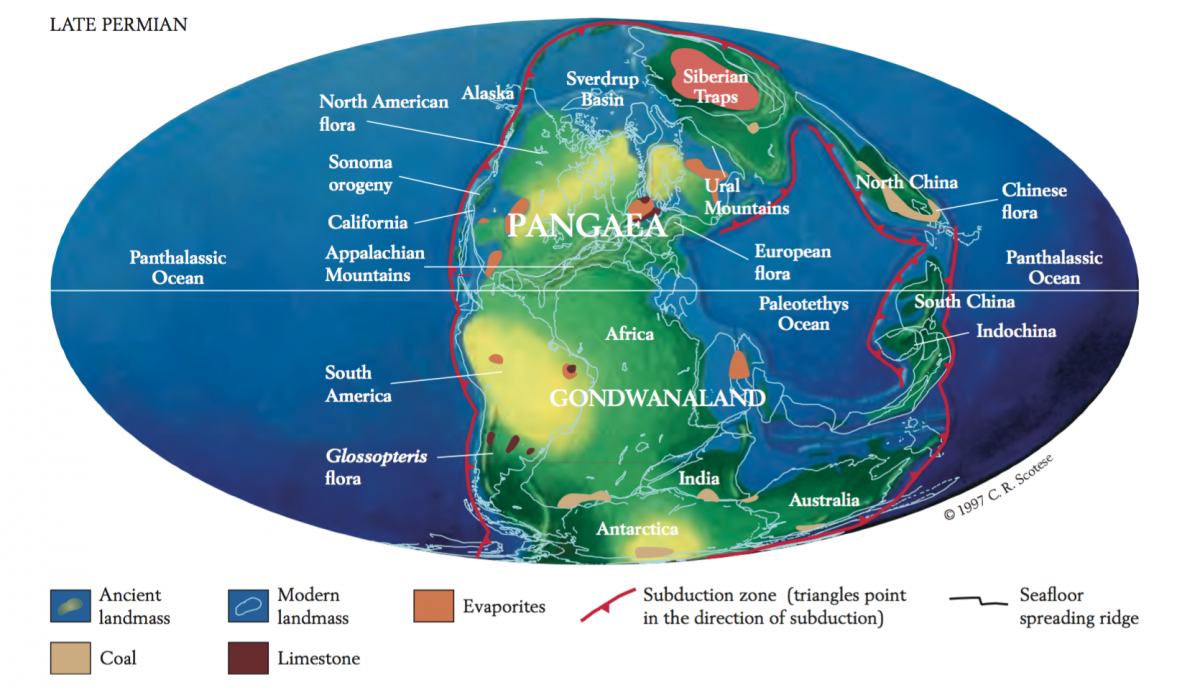The Appalachian Mountains were built on the margin of Laurentian over four successive orogenies: the Grenville (Proterozoic — late Precambrian), the Taconic (Ordovician), the Acadian (late Silurian — early Devonian), and the Alleghenian (late Paleozoic). Of these orogenies, the events that most effect the North Georgian Appalachians are the Grenville orogeny (Proterozoic — Late Precambrian), the Taconic orogeny (Ordovician) and the Alleghanian orogeny (late Paleozoic). Evidence of the Acadian orogeny in the Southern Appalachians is problematic (Casale and others, 2017).
GRENVILLE OROGENY (Proterozoic — late Precambrian)
Mountain building associated with the Grenville orogeny occurred over 1.5 to 1 bya (Proterozoic — Late Precambrian) and is associated with the assembly and rifting of Rodinia. The basement of the North Georgia mountains – dominated by granitic plutons and high-grade orthogneiss – formed during a continental collision associated with the assembly of Rodinia over one billion years ago (Chakraborty and others, 2012). The Tallulah Falls Dome granite formed after the assembly of Rodinia during a period of diverse magmatism that occurred along the entire Laurentian margin between 1180 and 1120 ma (Hynes and Rivers, 2010). The Grenville orogenic belt rifted apart at the end of the Precambrian about 600 mya, forming an ancient sea. Dahlonega gold was formed later in the Ordovician due to back-arc associated volcanism and deposited between cracks of what was then seafloor (German, 1989)
TACONIC OROGENY (Ordivician)
After the rifting of Rodinia, the tectonic setting on the eastern edge of Laurentian shifted from a passive margin, to a subduction zone, which carried an island arc formed in the middle of the pre-Atlantic ocean back to Laurentia and caused a collision and associated mountain building event called the Taconic orogeny. Garnet-to-sillimanite grade Paleozoic amphibolite facies and high grade gneiss metamorphism is recognizable throughout the North Georgia mountains, as noted by Hatcher (1971); these structures are indicative of the subduction zone and arc accretion associated with the Taconic orogeny.
ALLEGHANIAN OROGENY (late Paleozoic)
In the late Paleozoic (270 mya), the collision of Gondwana and the assemblage of the supercontinent Pangea created a huge fold and thrust belt that placed the crystalline basement of the Blue Ridge on the Laurentian margin. Widespread plutonism occurred in the North Georgia Mountains during this orogeny. Rifting occurred throughout the Mesozoic, culminating in the formation of the Atlantic Ocean. This tectonic activity marks the Southern Appalachians with normal-fault-bounded grabens, basaltic dikes (Triassic) and fluvial lake deposits (Triassic).
While the Tallulah Falls dome granite formed during the Grenville orogeny, doming occurred early in the Alleghenian orogeny along with other domes that formed in the eastern Blue Ridge at that time.
References
Casale, G., Levine, J. F., Craig, T. D., & Stewart, C. (2017). Timing and deformation conditions of the Tallulah Falls dome, NE Georgia: Implications for the Alleghanian orogeny. Geological Society Of America Bulletin, 129(9/10), 1195-1208. doi:10.1130/B31595.1
Chakraborty, S., Moecher, D. P., & Samson, S. D. (2012). Provenance of the Lower Ocoee Supergroup, eastern Great Smoky Mountains. Geological Society Of America Bulletin, 124(7-8), 1278-1292. doi:10.1130/B30578.1
German, J. M. (1989). Geologic setting and genesis of gold deposits of the dahlonega and carroll county gold belts, georgia. Economic Geology and the Bulletin of the Society of Economic Geologists, 84(4), 903-923. http://dx.doi.org.proxy.library.emory.edu/10.2113/gsecongeo.84.4.903
Hynes, A., & Rivers, T. (2010). Protracted continental collision — evidence from the Grenville Orogen. Canadian Journal Of Earth Sciences, 47(5), 591-620. doi:10.1139/E10-003


